A MOMENT OF REFLECTION
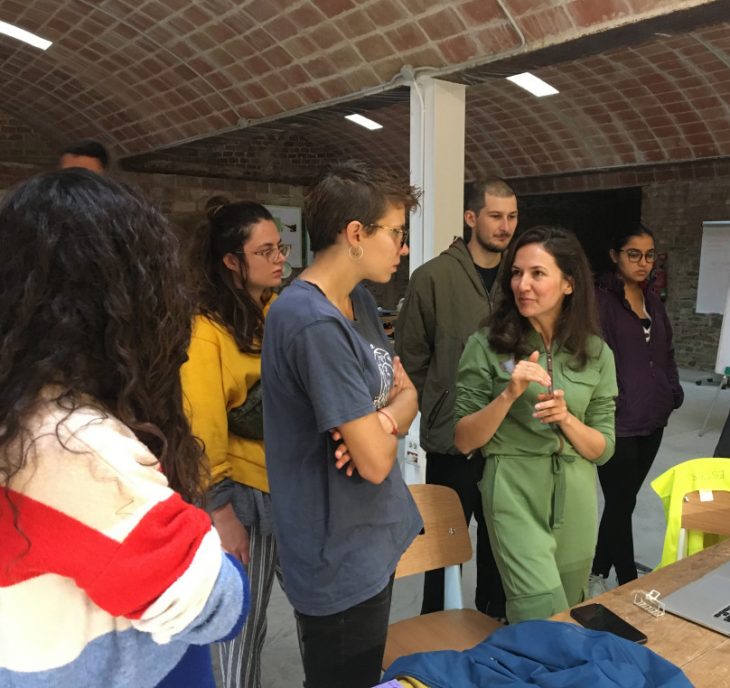
Getting started… First thoughts of the day
During the first hour of the morning lesson, with the trees waiting at the backyard, we took some time to organize ourselves. In this way, while we prepared to start the debarking process, the group of architects and producers headed to the site of the playground instalation to re-configure the design considering the final pieces of wood.
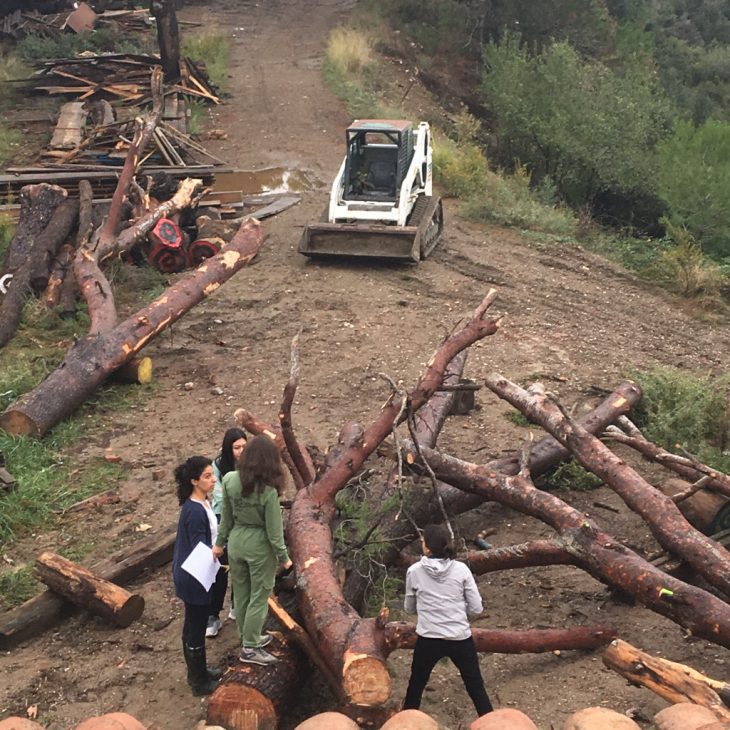
The trees in the backyard
In order to prepare for the site visit, we cutted the trees so they would correspond to the virtual configuration obtained in the 3D Mapping before. In this way we recovered trees 1-4, including the new branch “4′” obtained from tree four. In this way, we should have a precise knowledge of the trees actual mophology when figuring the re-configured design.
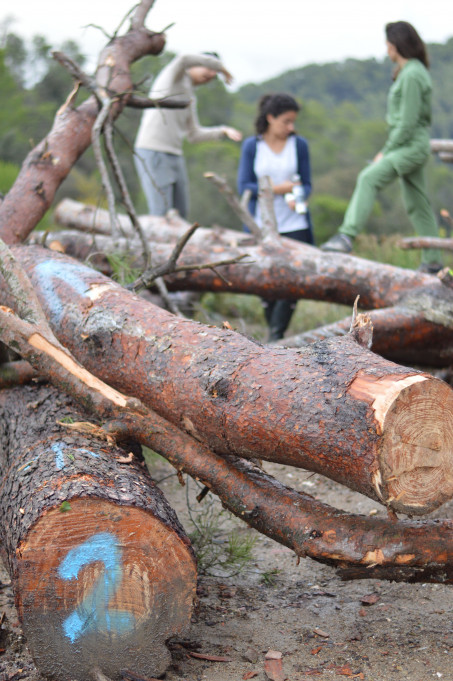
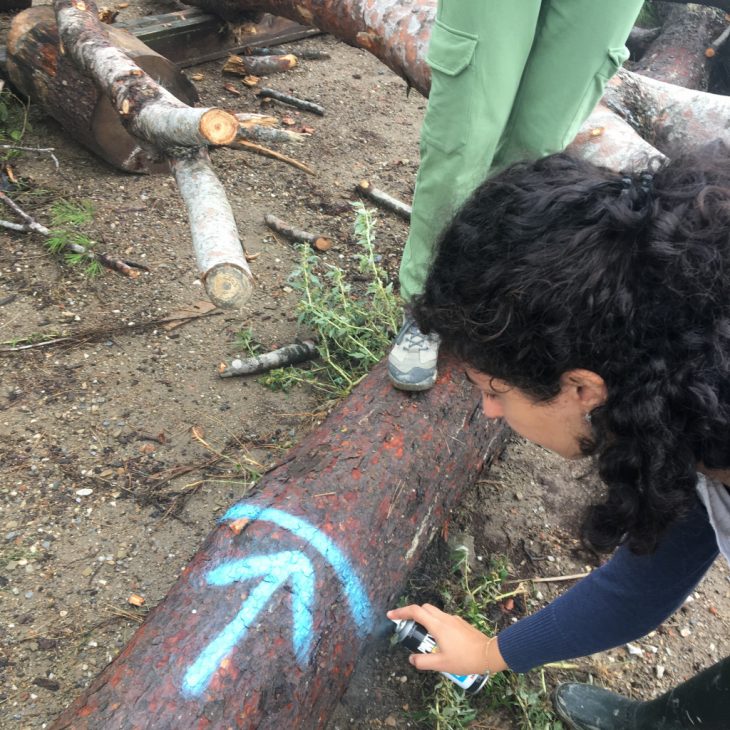

Figurative location of trees 1-4′
Once in the site, we configured the area where the actual playground is supposed to be located, defining the tensions that we would want to generate, along with the shapes of two pre-existing pine trees to the left. We defined a clear space in which the main vertical structures will be located, and then decided to place the new tree 4′ as an horizontal log.
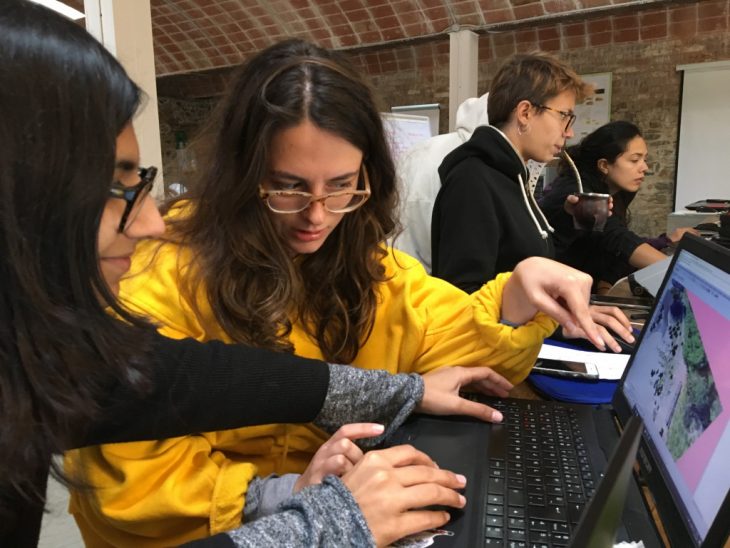
Back at the lab
Once back in the lab, we finished re-constructing the site, locating the final trees, with a new 3D Mapping. In this way, we managed to get more precise shapes of the actual trees.
DE-BARKING
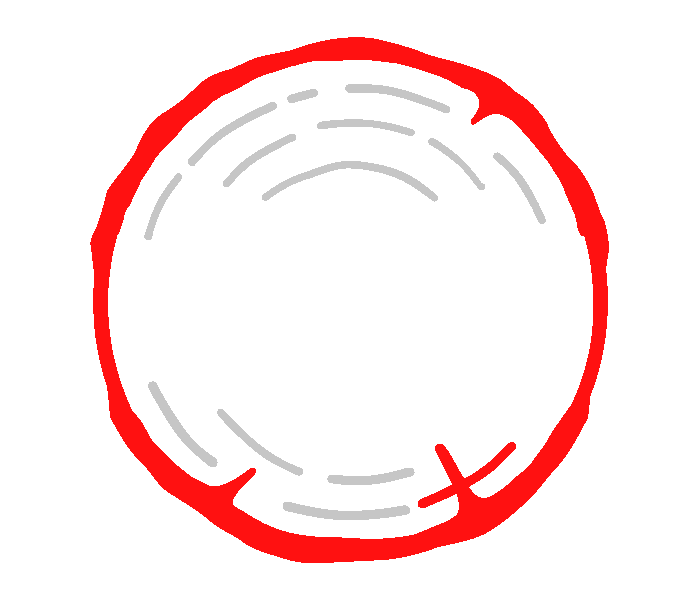
The process of debarking is not easy. It requires an enormous amount of work and thinking, even though the result is enormously satisfying. After facing with many technical problems that exceeded our control, we managed to get two ways of debarking: With a hummer back (manual way) and with a water jet (mechanical way).
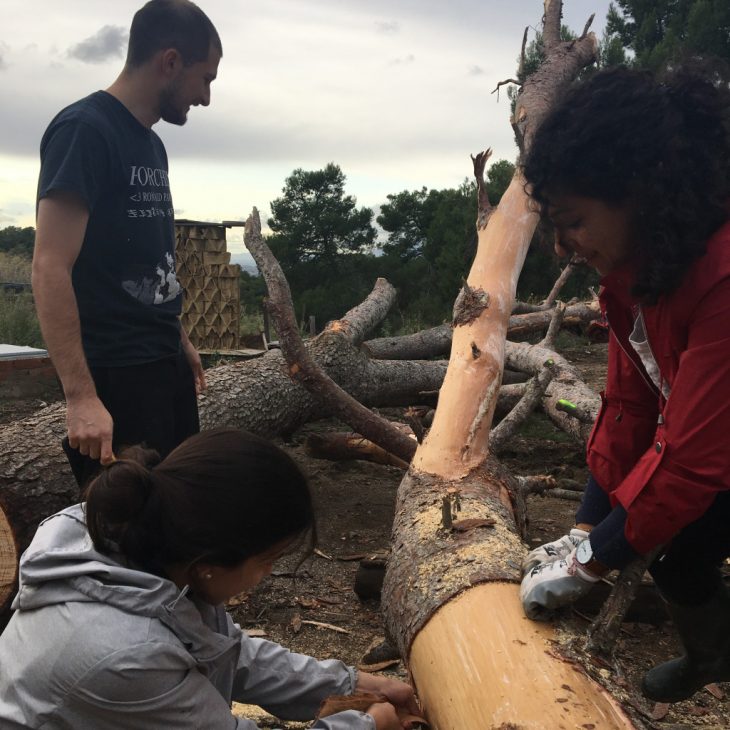
Debarking manually
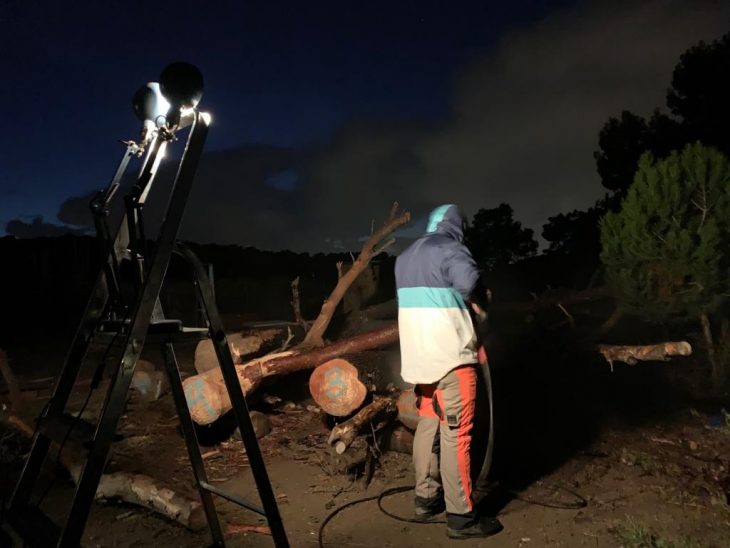
Debarking with water jet
Beside from the hard work, the result is excelent. The surface of the tree ends up being smooth and scratch-free. If we also consider that the natural oils of the intersticial part between the bark and the trunk remains untouched,is important to remark that these act as natural protectors for the future use of the trees.
Unwrapping the tree: not a simple task is a project of IaaC, Institute for Advanced Architecture of Catalonia, developed at Masters in Advanced Ecological Buildings in 2019/2020 by:
Students: MAEB 2019/2020
Faculty: Daria Bychkova & Michael Salka
23.10.2019